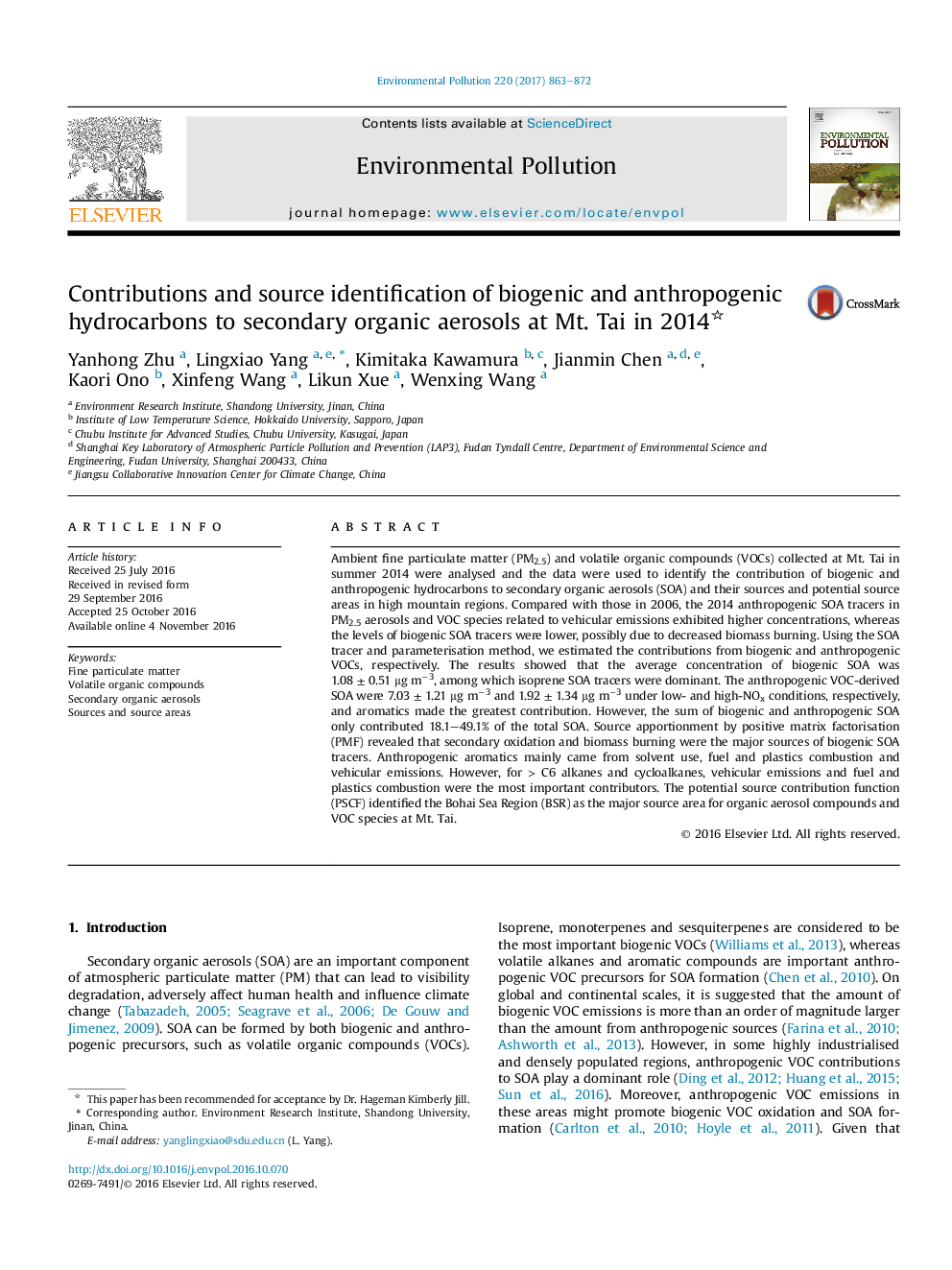| کد مقاله | کد نشریه | سال انتشار | مقاله انگلیسی | نسخه تمام متن |
|---|---|---|---|---|
| 5749514 | 1619153 | 2017 | 10 صفحه PDF | دانلود رایگان |

- Contributions of biogenic and anthropogenic hydrocarbons to SOA at Mt. Tai were studied.
- Compared with those in 2006, the 2014 anthropogenic influence at Mt. Tai increased.
- The sum of calculated biogenic and anthropogenic SOA contributed 18.1-49.1% of total SOA.
- Sources and potential source areas of biogenic and anthropogenic SOA were identified.
Ambient fine particulate matter (PM2.5) and volatile organic compounds (VOCs) collected at Mt. Tai in summer 2014 were analysed and the data were used to identify the contribution of biogenic and anthropogenic hydrocarbons to secondary organic aerosols (SOA) and their sources and potential source areas in high mountain regions. Compared with those in 2006, the 2014 anthropogenic SOA tracers in PM2.5 aerosols and VOC species related to vehicular emissions exhibited higher concentrations, whereas the levels of biogenic SOA tracers were lower, possibly due to decreased biomass burning. Using the SOA tracer and parameterisation method, we estimated the contributions from biogenic and anthropogenic VOCs, respectively. The results showed that the average concentration of biogenic SOA was 1.08 ± 0.51 μg mâ3, among which isoprene SOA tracers were dominant. The anthropogenic VOC-derived SOA were 7.03 ± 1.21 μg mâ3 and 1.92 ± 1.34 μg mâ3 under low- and high-NOx conditions, respectively, and aromatics made the greatest contribution. However, the sum of biogenic and anthropogenic SOA only contributed 18.1-49.1% of the total SOA. Source apportionment by positive matrix factorisation (PMF) revealed that secondary oxidation and biomass burning were the major sources of biogenic SOA tracers. Anthropogenic aromatics mainly came from solvent use, fuel and plastics combustion and vehicular emissions. However, for > C6 alkanes and cycloalkanes, vehicular emissions and fuel and plastics combustion were the most important contributors. The potential source contribution function (PSCF) identified the Bohai Sea Region (BSR) as the major source area for organic aerosol compounds and VOC species at Mt. Tai.
345
Journal: Environmental Pollution - Volume 220, Part B, January 2017, Pages 863-872